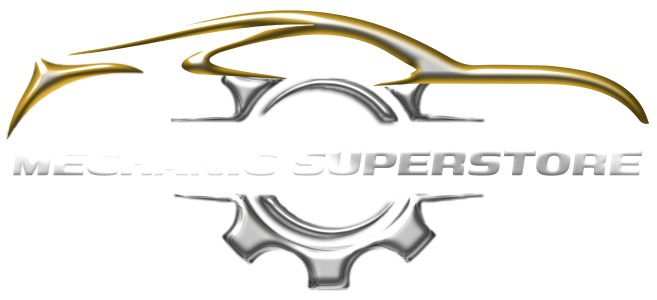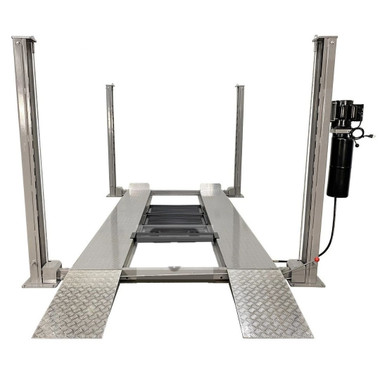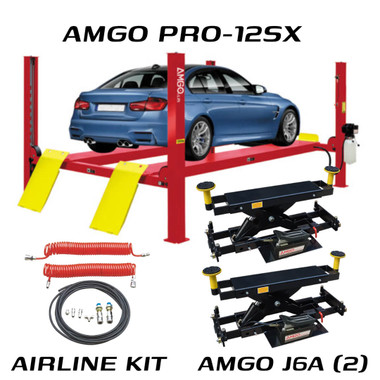The Future of Auto Shop Equipment: What's Next?
Estimated 0 min read
The auto repair industry is on the cusp of significant transformation by 2024, driven by automotive technology advancements. With electric and hybrid vehicles becoming more prevalent, repair shops must evolve by acquiring specialized training and tools. The US electric vehicle market is set to expand at a 17.1% annual growth rate from 2019 to 2024. This trend emphasizes the imperative for auto shops to adopt advanced technologies to stay competitive.
Businesses must not only keep pace with industry trends but also stand out by offering personalized services. A significant fact reveals that 85% of workshops are investing in advanced diagnostic tools to manage the complexities of modern vehicles. Collaborations, such as General Motors (GM) and Microsoft's integration of ChatGPT into automotive technology, highlight the potential of AI in auto repair software.
uto shops must adopt technologies like AI for predictive maintenance to reduce downtime and enhance efficiency. With the average vehicle age expected to reach 12 years by 2023, there will be an increased need for maintenance services. This presents an opportunity for repair shops to integrate innovative solutions like those from BOLT ON Technology, ensuring they lead the industry and uphold high-quality repair standards.
Advanced Diagnostic Tools for Modern Vehicles
The advent of smart diagnostic tools has transformed the auto repair industry, especially with the OBD-II system's introduction in the mid-'90s. This shift has led to widespread adoption of these tools in modern vehicles. They connect directly with a vehicle's onboard computer, offering quicker and more precise diagnoses. This reduces troubleshooting time significantly, compared to traditional manual methods.
These tools not only increase efficiency but also enhance the accuracy in identifying vehicle problems. This precision reduces the chance of errors. However, their advanced capabilities require a significant investment in both purchase and upkeep. This highlights the financial commitment that auto shops must undertake. Yet, the detailed data and transparency these tools provide help build trust with customers. This facilitates clearer communication between mechanics and car owners.
For auto mechanics, continuous learning and training are crucial to keep up with the latest in smart diagnostic tools and onboard computer analysis technologies. The field's rapid advancements mean ongoing education is necessary to master new tools and software. Looking ahead, the integration of artificial intelligence, machine learning, and sensor technology into diagnostic equipment is expected to further boost their capabilities. This ensures auto shops can continue to offer precise and efficient services for the latest automotive technologies.
Electric and Hybrid Vehicle Service Equipment
With approximately 3.3 million electric and hybrid vehicles now on U.S. roads, the need for specialized electric vehicle servicing and hybrid repair tools is on the rise. These vehicles feature high-voltage components, necessitating repair shops to invest in the right equipment and training for safety and efficiency.
High-voltage batteries in electric vehicles come in various forms, including cylindrical, prismatic flat cells, and pouch batteries from brands like Tesla, Chevy Volt, and Nissan Leaf. Given this diversity, battery management systems are crucial for extending their life and performance. Repair shops must possess the necessary tools and knowledge to manage these components safely.
EV motors, with their brushless design and three-wire coils, operate similarly to traditional vehicle alternators. However, their unique nature demands specialized diagnostic tools for proper servicing. Moreover, the integration of hybrid repair tools is vital for addressing the mechanical and electrical systems of hybrid vehicles.
Owners of electric vehicles, often spending around $50,000 on their cars, are eager to invest in maintenance and upgrades. This includes wheels, tires, and suspension replacements. With many vehicle suspensions needing replacement after 50,000 to 70,000 miles, costing between $7,000 and $8,000, auto repair shops have a significant revenue opportunity.
Advanced auto shop software, such as ARI, offers valuable resources like up-to-date repair manuals, diagnostic codes, and technical service summaries for all vehicle types, including EVs. These tools enhance the shop's capacity to provide comprehensive services like tire changes, alignments, brake servicing, and heating and air conditioning maintenance.
Moreover, with EVs expected to account for 9% of new light-duty car sales in 2023, it's crucial for auto repair shops to keep up with the latest in battery management and EV-related technologies. This readiness will enable them to successfully enter the expanding market.
AI and Auto Repair Software
The landscape of auto repair is evolving rapidly, with artificial intelligence integration at the forefront. Collaborations between industry leaders like General Motors and Microsoft Corp highlight AI's transformative potential in the automotive sector. AI-driven diagnostics enable mechanics to foresee and fix issues early, significantly enhancing predictive maintenance.
AI-driven auto repair software is transforming workflow efficiency by optimizing inventory management. Systems like PartsTech predict part needs, reducing delays and boosting repair shop productivity. AI tools also streamline customer service by deploying advanced chatbots and virtual assistants. These tools swiftly handle inquiries and efficiently schedule appointments, improving the customer experience.
The advantages of AI extend beyond customer service and maintenance. Predictive maintenance powered by AI can significantly cut down on unexpected breakdowns, saving time and money for auto shops and their clients. For example, General Motors uses AI sensors to predict breakdowns in their factories, leading to substantial time and cost savings. BMW employs AI for quality control, ensuring high standards and reducing defects. Waymo uses AI for autonomous driving, aiming to make transportation safer and more efficient.
As AI evolves, its role in the automotive industry broadens beyond diagnostics and predictive maintenance. AI-driven robotics is now used in tasks like painting and welding, making repairs quicker, safer, and more precise. This technological advancement fosters long-lasting customer relationships through personalized services powered by AI-driven CRM systems. These systems predict customer needs and enhance overall satisfaction.
The smart car tech market is growing rapidly, from $26 billion in 2022 to an estimated $74.5 billion by 2030. This growth highlights the immense potential and opportunities AI presents for the automotive industry. By adopting AI technology, auto repair shops can stand out in a competitive market, draw in more customers, and achieve higher productivity.
3D Printing for Custom Automotive Parts
The advent of 3D printing technology has transformed the automotive sector, especially in custom parts production. A 2015 Wohlers Report reveals that motor vehicles comprised 16.1% of the 3D printing market, showcasing the technology's pivotal role. This innovation enables manufacturers to print parts on demand, thus alleviating inventory issues and catering to bespoke needs.

Porsche, a leading luxury car brand, utilizes 3D printing for both metal and plastic components crucial for their classic models. This approach satisfies niche market needs without the burden of overstocking. Ford and Volvo Trucks also employ 3D printing for creating replacement parts and tools, potentially saving substantial costs.
Markforged's project, replicating a 1930s carburetor cap with 3D metal printing, highlights the technology's potential in automotive restoration and legacy part availability. The Moto2 motorcycle racing team TransFIORmers designed a front suspension that is 40% lighter yet more rigid, demonstrating the advantages of custom tooling in motorsports.
Educationally, institutions like Volkswagen Academy in Emden and the E-Team Squadra Corse at the University of Pisa integrate 3D printers for training and developing racing car components. Škoda Auto employs this technology for innovative production techniques. Driftworks in Birmingham crafts custom car parts with remarkable speed, sometimes in as little as two hours.
Despite the clear benefits of on-demand printing, ensuring the quality and safety of these parts poses a significant challenge. Ensuring these parts do not compromise vehicle integrity necessitates rigorous quality assurance processes. As the technology advances, striking a balance between innovation and safety will be essential for widespread adoption in the automotive industry.
Robotic Repair Assistants in Workshops
Automation is reshaping the auto repair industry. In the next 3 to 6 years, robots will augment nearly 75% of roles in collision repair, enhancing efficiency and safety. Tesla's Tesla-bot, designed for repetitive tasks, showcases the expanding role of robotics.
Within 1 to 3 years, new roles like damage identification, estimating, and parts ordering will emerge. Robotic receptionists are also on the horizon. Automated fluid exchange systems are making maintenance tasks like oil changes more accurate and error-free.
Robotic arms and exoskeletons are transforming repair tasks by offering support and precision. These technologies support a wide range of applications, from customer service to painting and coating.
Workshops embracing these innovations will see significant improvements. Automated systems can handle car washing, panel sanding, and even plastic repairs and welding. This integration raises service quality and creates a safer work environment by reducing injury risks.
Automated fluid exchange systems are key to the reliability and efficiency of auto repair. As they become more common, auto shops will see lower labor costs and quicker service times. This means better value for customers.
Augmented Reality for Vehicle Maintenance
Augmented Reality (AR) is transforming vehicle maintenance with groundbreaking solutions. Audi and Porsche are leading the charge, using AR to boost precision and streamline repair processes. The market for automotive AR is expected to hit nearly $7 billion by 2025, with a growth rate of 17.6% annually.
AR brings numerous benefits to auto repair, from intelligent troubleshooting to enhancing customer experiences. It enables remote diagnostics, allowing mechanics to check vehicle systems and predict future issues. This reduces guesswork and helps identify complex problems using AI and machine learning.
AR tools like AR glasses and rugged tablets help mechanics connect real-world parts with virtual tools. This improves repair accuracy and efficiency. It also cuts down repair costs for consumers, making repair shops more accessible to a wider audience.
AR technology also supports remote expert assistance through digital twins, offering virtual demonstrations of complex repairs. Marker-based AR uses QR codes to trigger digital content, while markerless AR employs GPS and sensors for information overlay. Projection-based AR projects digital content onto surfaces, enhancing real-world interactions in automotive repairs.
Moreover, AR can revolutionize virtual training for mechanics, preparing them for future automotive technologies. Despite challenges like high implementation costs and training needs, AR's potential in auto repair is vast. It optimizes repair costs and timing, leading to higher customer satisfaction.
As AR continues to evolve in auto repair, its integration into various maintenance aspects signals a future of more efficient, precise, and cost-effective repairs. The advancements in augmented reality mark a significant shift in the automotive repair industry, set to become a standard soon.
Eco-Friendly Equipment for Sustainable Operations
The automotive industry is rapidly evolving, making the adoption of eco-friendly repair solutions crucial. Sustainable automotive workshops are now focusing on waste oil burners, solvent recyclers, and energy-efficient systems. These efforts aim to minimize their environmental footprint.
In 2018, the global car sales reached 86 million units, accounting for 9% of all greenhouse gas emissions. This statistic underscores the pressing need for eco-friendly solutions in the industry. By embracing sustainable practices, workshops can achieve cost savings through efficient energy use, waste reduction, and recycling.
Investors are increasingly drawn to companies that prioritize sustainability. This link between financial support and sustainable operations is clear. With the advent of electric vehicles, autonomous driving, and mobility-as-a-service, the focus on eco-friendly practices is more vital than before.
Sustainable automotive workshops leverage technologies like A365 to monitor and reduce their carbon footprint. They manage resources more efficiently and cut down on waste. This approach ensures compliance with environmental regulations and avoids penalties.
By adopting eco-friendly repair solutions, workshops meet consumer expectations and enjoy substantial operational cost savings. The European Commission's goal to reduce CO2 emissions from vehicles by 55% by 2030 and 100% by 2035 highlights the significance of these sustainable practices.
Moreover, focusing on sustainability boosts employee engagement, productivity, and job satisfaction. Embracing circular economy practices, such as recycling, refurbishing, and repurposing vehicle parts, aids in waste reduction and enhances environmental responsibility.
Mobile Workshop Solutions and On-Demand Services
The rise of the on-demand economy has transformed the automotive repair industry with mobile workshop solutions. These services bring the repair shop to consumers, offering unmatched flexibility and convenience. Given the pandemic's impact on the automotive sector and consumers' preference for older cars, this innovation fills a crucial market need.
Mobile auto repair services benefit both businesses and consumers. Companies like YourMechanic and Wrench lead this trend with on-demand services tailored to customer schedules. They handle everything from routine maintenance to complex repairs efficiently, using advanced tools and portable equipment.
Technological advancements have made mobile services more practical. For example, Volkswagen's MARTA uses augmented reality to aid technicians in complex repairs, boosting efficiency and safety. Raspberry Pi tracks diagnostic data for real-time analysis and predictive maintenance, raising the bar for on-demand services. CarTwin technology cuts maintenance costs and monitors emissions, supporting eco-friendly practices in the industry.
Mobile workshop solutions open up new revenue streams for businesses and give them a competitive advantage. As consumers value convenience more, the demand for mobile auto repair is expected to grow. Adopting these innovative methods not only satisfies customer needs but also fosters sustainable and efficient automotive services.











